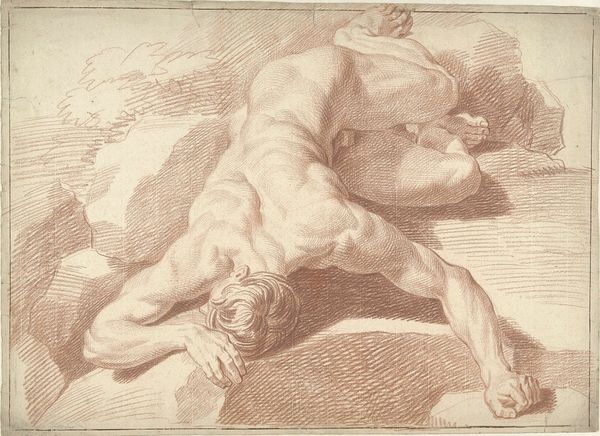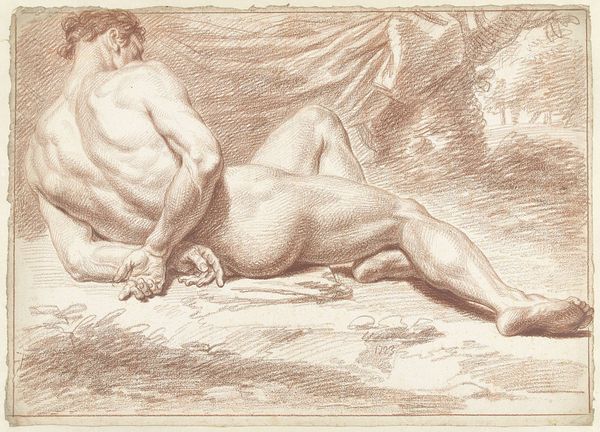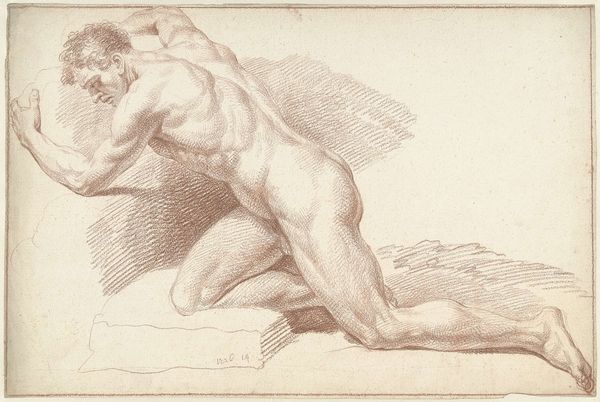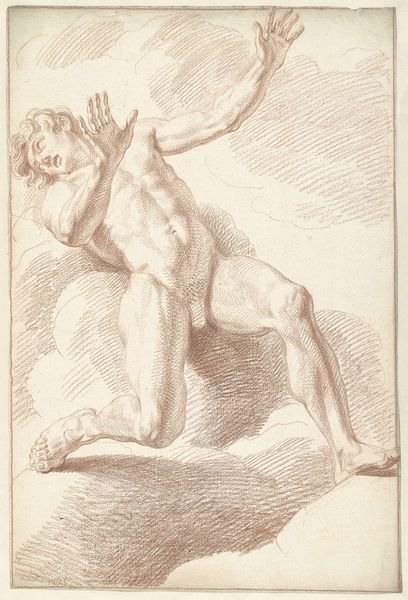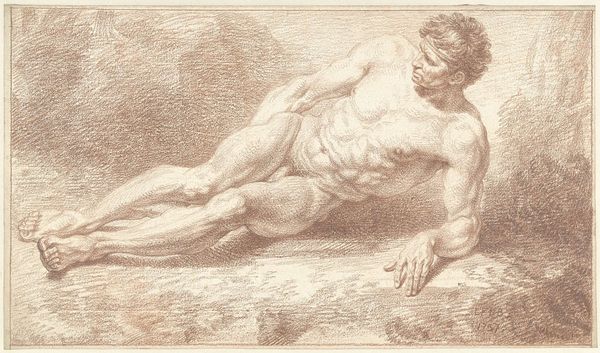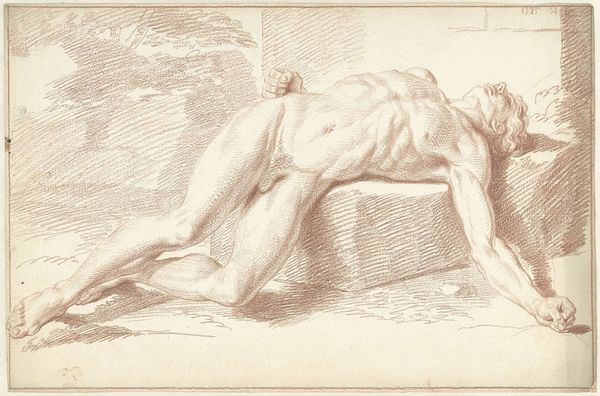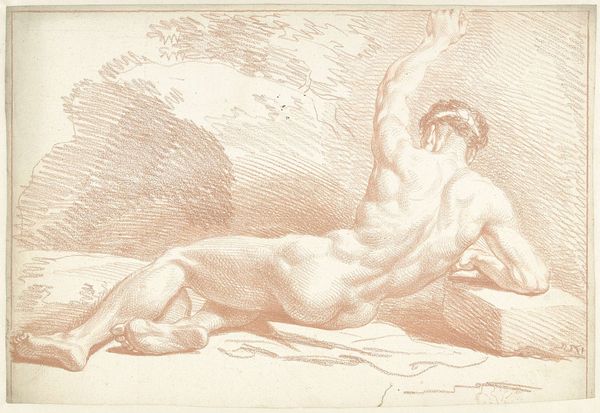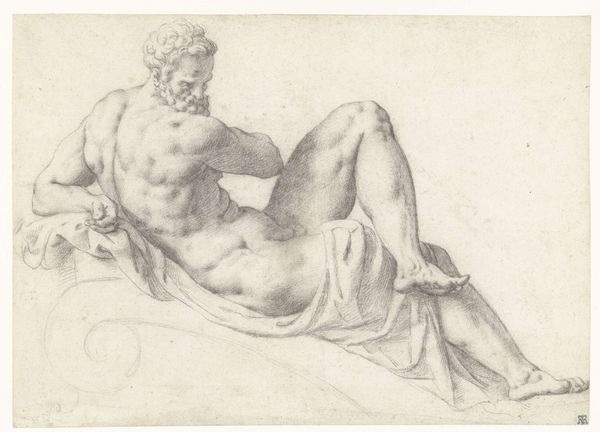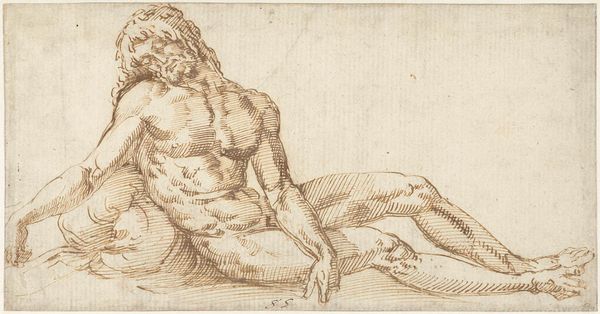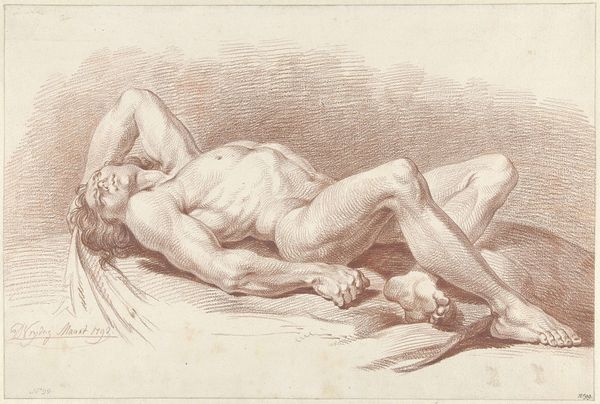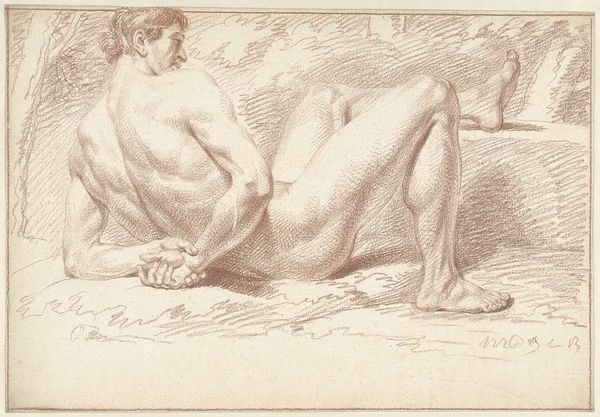
drawing, pencil
#
portrait
#
drawing
#
baroque
#
pencil drawing
#
pencil
#
portrait drawing
#
genre-painting
#
nude
Dimensions: height 312 mm, width 476 mm
Copyright: Rijks Museum: Open Domain
Editor: This is a drawing titled "Mannelijk naakt, liggend op de zij, naar links," or "Male Nude, Lying on his Side, to the Left" by Louis Fabritius Dubourg, made in 1726 using pencil. It's striking how vulnerable and exposed the figure appears. What social and cultural commentary might Dubourg be making here? Curator: The vulnerability is key, isn’t it? Consider the period: 1726, the height of the Baroque. This wasn't simply an objective study of the human form; think about what nude depictions *did* then. Who commissioned works like these? They reinforced status; even 'genre paintings’ reflected values of the elite. The pose seems deliberate, almost performative. What’s your read on the draped cloth? Editor: I see the drape adding to that performance, but I also think it directs the eye. The curves and folds lead me to different parts of the body. Do you think it's idealizing the male form, or is it more realistic? Curator: Good question. Baroque wasn’t as overtly about idealization as the Renaissance, yet anatomical accuracy became fashionable, as did drawings based on live models. The "realism" of the nude became a signifier of power for its commissioners, reflecting how they were mastering the observation of the real world. What might an un-idealized nude communicate about the social power dynamic between the artist, the model, and the commissioner? Editor: So the "realism" is more about power than reflecting reality. It shifts how I see the image, especially the lack of idealization and that performative pose, both as signifiers of social dynamics. I wouldn't have picked up on that without thinking about the art world back then. Curator: Precisely. By considering those relationships, we move beyond mere appreciation of skill to understanding art’s public role. It's the difference between seeing *what* is depicted, and understanding *why*.
Comments
No comments
Be the first to comment and join the conversation on the ultimate creative platform.
